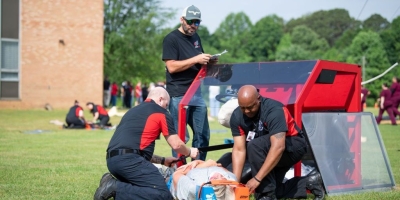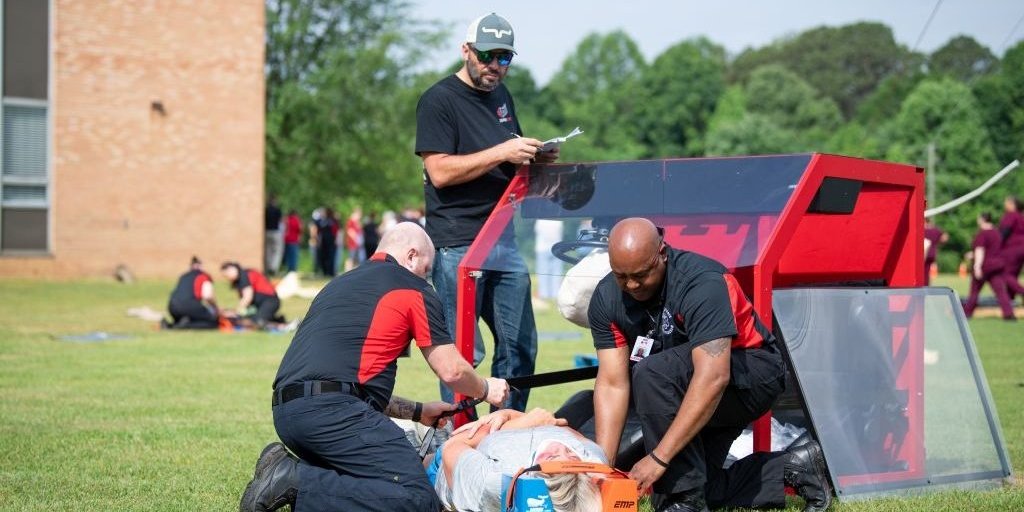
Not long ago, I found myself crying out at the grounds near Helderman Hall and Beville Hall at Gadsden State Community College. But, it was all part of an exercise, not real.
This chaotic scene was part of a large-scale mass casualty simulation aimed at giving nursing and paramedic students valuable hands-on experience before they head into their careers.
Over 100 students from various programs—nursing, emergency medical services, x-ray, and the Medical Institute’s Technician Program—took part in tornado disaster simulations that mimicked a rural area devastated by a storm.
The drill featured multiple simulated victims, including a 32-year-old man seriously injured and pinned under debris, a woman trapped in a vehicle, and two individuals pronounced dead at the scene.
This event was organized with the help of Gadsden State’s Police and Public Safety Bureau, alongside more than a dozen local emergency response agencies. More than 200 volunteers contributed to make the scenario realistic.
“It was truly a collective effort,” remarked Dr. Joey Battles, the director of the Department of Health Sciences at Gadsden. “The committee had a clear vision, and I’m not sure everyone realizes how detailed the planning was. Our focus is entirely on what benefits the students.”
The simulation was managed by John Hollingsworth, who directs the EMS program, and Dr. Evelyn Lightsey, the college’s simulation coordinator. It offered students the chance to practice responses to complex, high-pressure emergency situations in real time.
“We want our students to learn how to collaborate,” Battles explained. “We call this ‘interprofessional education,’ and it’s really key. I aimed to expose them to real-life scenarios using state-of-the-art equipment.”
Christina O’Neill, a nursing student acting as a trauma nurse, described the experience as intense yet invaluable.
“The triage process is quite hectic, both emotionally and physically,” she noted. “The EMS team did an outstanding job. It takes a lot to silence the chaos and focus on what’s happening. They executed it flawlessly.”
O’Neill, who is currently working in a hospital ER, shared that the simulation helped bridge her understanding of the connection between fieldwork and hospital care.
“I’m familiar with emergency situations, especially when multiple patients arrive at once. Observing the ground-level response enhances my work in the ER,” she said.
This exercise was not only helpful in honing technical skills and improving communication but also provided a space for students to make mistakes and learn in a safe environment.
“Simulations like this are vital,” Battles stressed. “They allow students to gain confidence, foster teamwork, and truly grasp what it’s like to respond in urgent situations.”
He mentioned the aim is to conduct these mass casualty simulations twice yearly to offer students experiential learning and prepare them for their future careers.
For more about Gadsden State’s healthcare program, visit www.gadsdenstate.edu/healthsciences.







